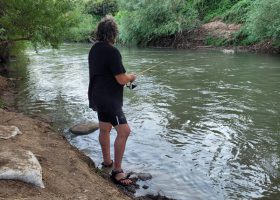 For over 10,000 years, people returned to the same spot on the southern edge of the Paleo-Hula Lake to exploit aquatic resources. They left fishhooks and fishing weights in the layers of the Epipaleolithic (EP) site of Jordan River Dureijat (JRD), evidence for evolution in fishing technology and changing lifeways.
For over 10,000 years, people returned to the same spot on the southern edge of the Paleo-Hula Lake to exploit aquatic resources. They left fishhooks and fishing weights in the layers of the Epipaleolithic (EP) site of Jordan River Dureijat (JRD), evidence for evolution in fishing technology and changing lifeways.
JRD is an ephemeral, short-term encampment located on the shore of Paleolake Hula that was intermittently occupied over a span of about 10,000 years (ca. 20,000 to 10,000 cal BP) during the Levantine Epipaleolithic period.
The 14C chronology of JRD demonstrates that its upper layers accumulated during the Early Levantine Neolithic and the lowest has remains dating to ca. 20k years BP, hence including the entire Levantine EP.
This time interval saw the most significant change in human history – the shift from nomadic hunter-gatherer bands to the sedentary agricultural communities of the Neolithic. At the same time, world climate witnessed a dramatic change with the collapse of the Ice Age regime, from the last glacial maximum (LGM) to onset of the present inter-glacial, the Holocene. Sites documenting the entire EP period are rare in the Levant, and the JRD layers are also unique in their superb preservation of organic, in particular, botanic remains.
Such remains provide excellent proxies for studying the chronology and magnitude of post-LGM climatic and environmental changes in the Levant, the nature and magnitude of which are highly disputed. A primary lacuna in the debate is the factor of time. It is difficult to evaluate causes and effects of climate change absent solid comparative data for the magnitude of past climate changes over time.
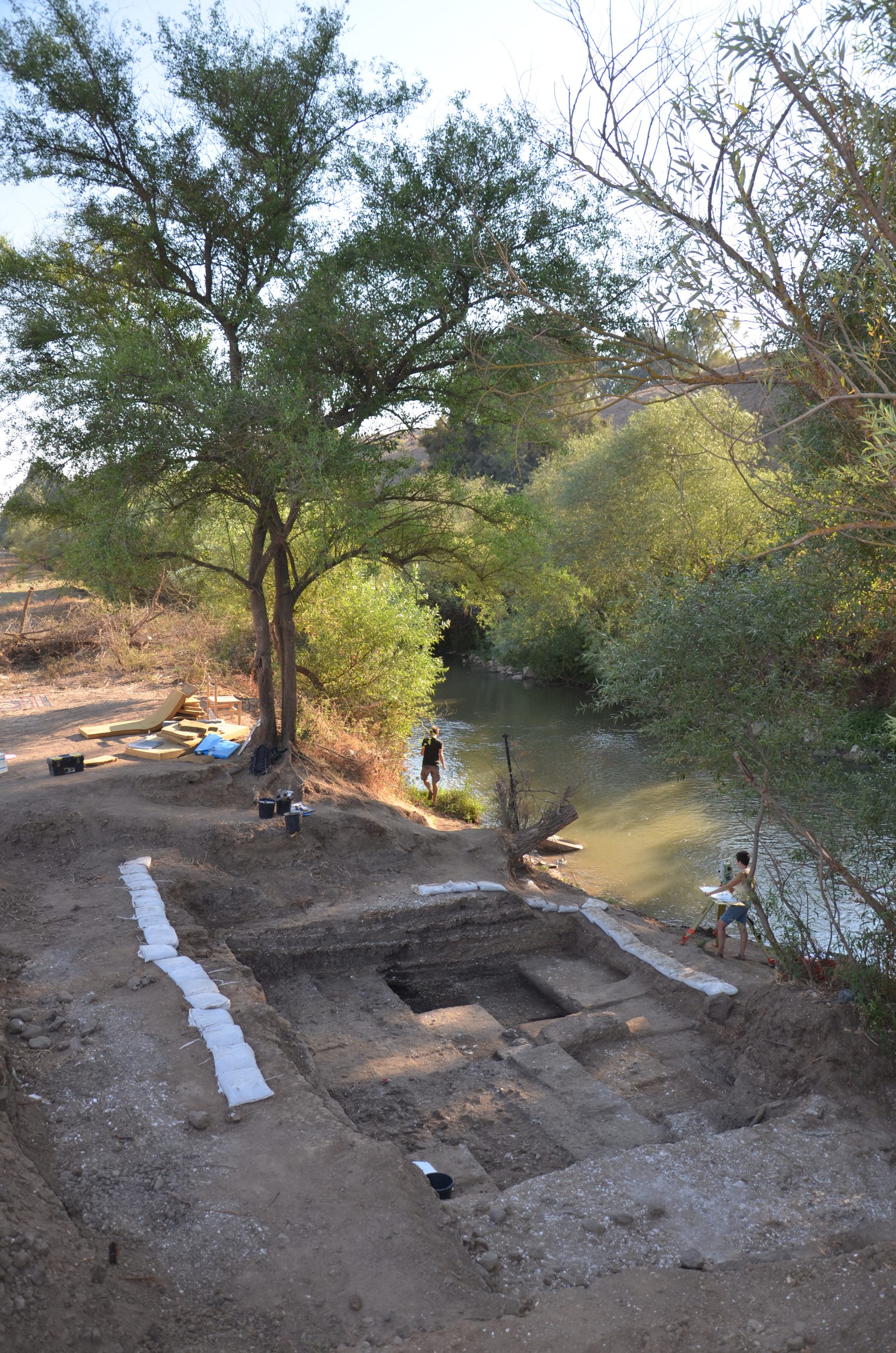
Location of JRD & Galilee Epipaleolithic sites
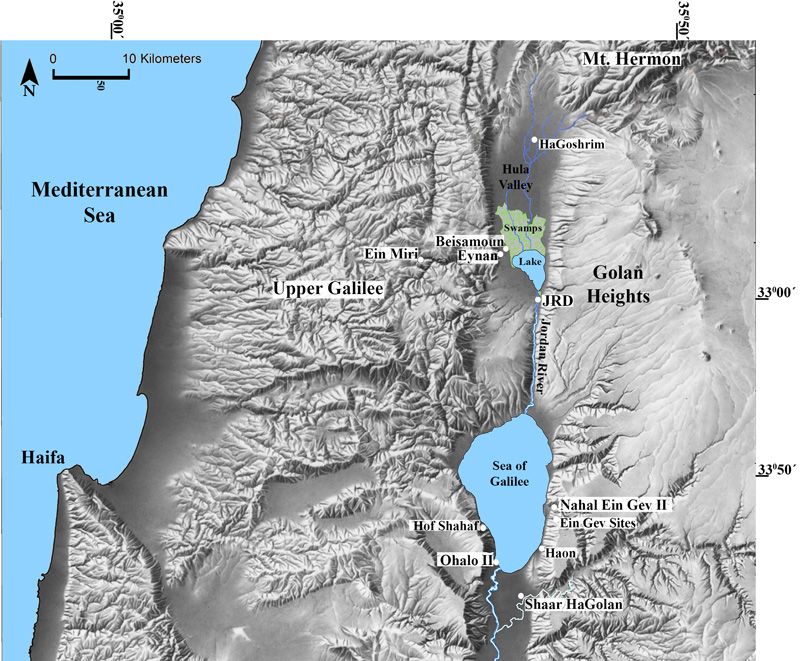
JRD bone fish hooks and small line weights
3D images of the JRD hooks and small grooved pebbles
3D models in WRL format
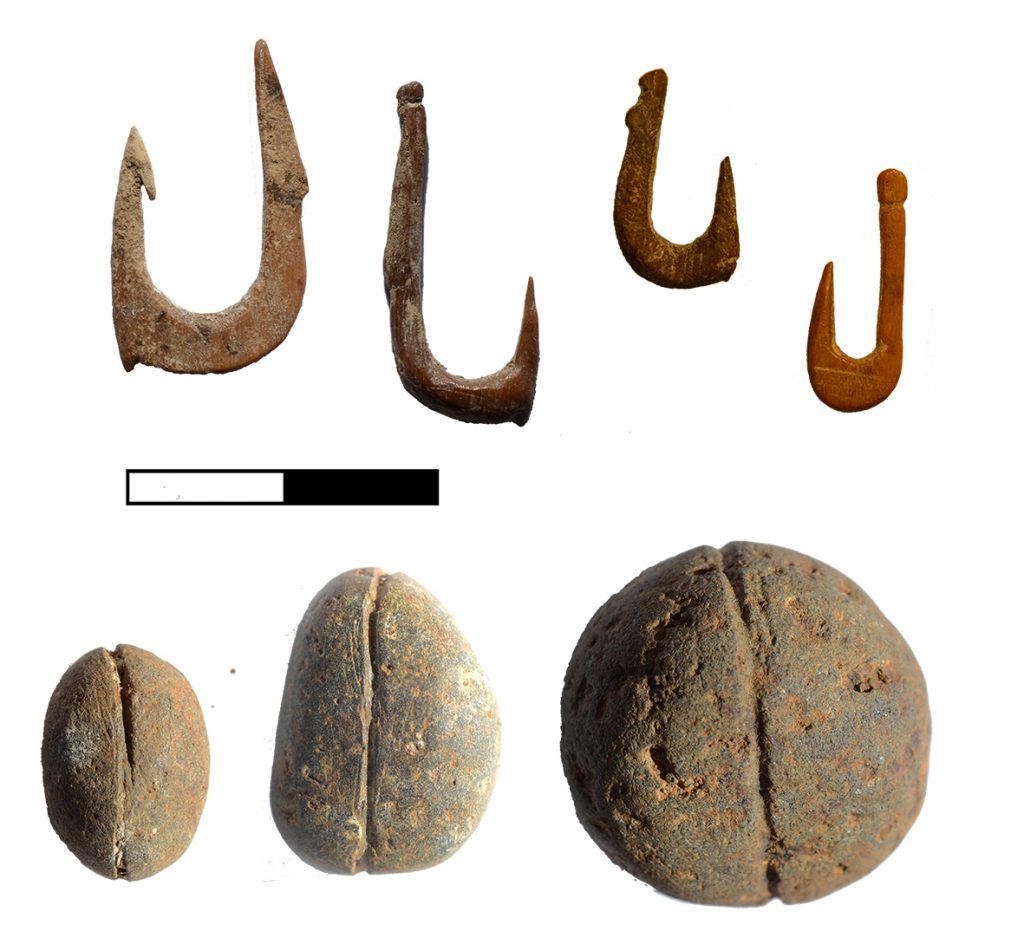
JRD stratigraphic sequences
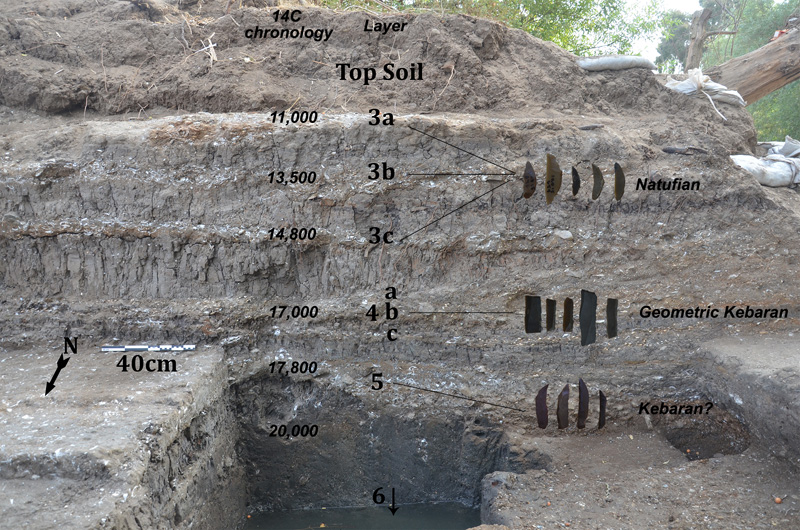
JRD stratigraphy 2018
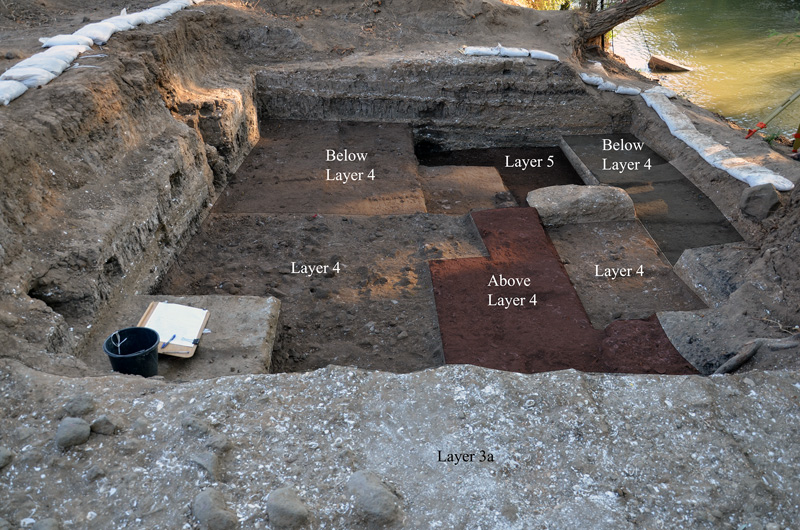
JRD in pictures
JRD video - hooks
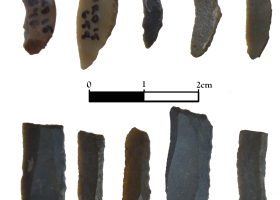
Flint Tools
The study of the JRD flint assemblage is in its early stages. Nevertheless, a...
Read More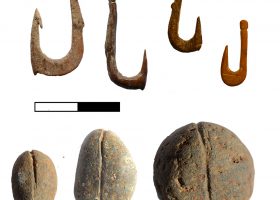
Fishing Gear
Early line and hook fishing at the Epipaleolithic site of Jordan River Dureijat (Northern...
Read More
Jordan River Papers
Sharon, Gonen, Craig S Feibel, Shmuel Belitzky, Ofer Marder, Hamoudy Khalaily, and Rivka Rabinovich
2002. 1999 Jordan River Drainage Project Damages Gesher Benot Ya’aqov: A Preliminary Study of the Archaeological and Geological Implications. In Eretz Zafon – Studies in Galilean Archaeology, edited by Zvi Gal, pp. 1–19. Israel Antiquities Authority, Jerusalem.
Sharon, Gonen, Ofer Marder, and Elisabetta Boaretto
2002 A note on 14C dates from the Epipaleolithic site at Gesher Benot Ya’aqov. Journal of The Israel Prehistoric Society 32:5–15.
JRD Papers
Marder, Ofer, Rebecca Biton, Elisabetta Boaretto, Craig S. Feibel, Yoel Melamed, Henk K. Mienis, Rivka Rabinovich, Irit Zohar, and Gonen Sharon
2015 Jordan River Dureijat – A new Epipaleolithic site in the Upper Jordan Valley. Mitekufat Haeven – Journal of the Israel Prehistoric Society 45:5–30.
Sharon, Gonen, Leore Grosman, Ethel Allué, Alon Barash, Daniela E. Bar-Yosef Mayer, Rebecca Biton, Elizabeth Bunin, Dafna Langgut, Yoel Melamed, Steffen Mischke, Francesco Valletta, and Natalie Munro
2020 Jordan River Dureijat: 10,000 years of intermittent Epipaleolithic activity on the shore of Paleolake Hula. PaleoAnthropolgy 2020:34–64. DOI:10.4207/PA.2020.ART141.
JRD Excavation Reports
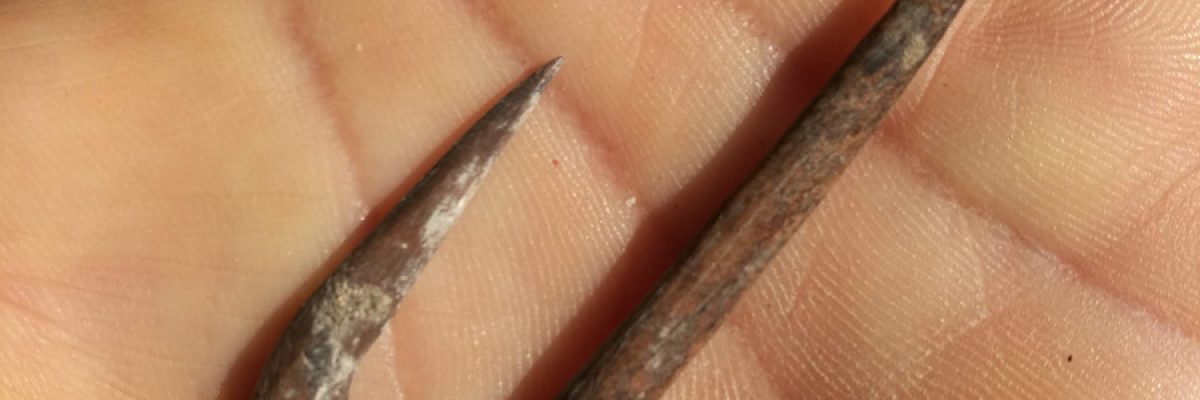
-
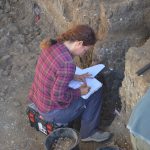
Dr. Dafna Langgot Pollen and Archaeo-botany, Tel Aviv University | Website
-
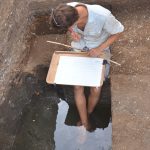
Dr. Francesco Valletta Lithic Technology and 3D analysis
-

Prof. Steffen Mischke Geology & Paleoenvironment, University of Iceland | Website
-

Prof. Leore Grosman Lithic technology & 3D analysis, Hebrew University of Jerusalem | Website
-
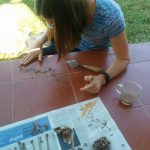
Prof. Natalie Munro Zooarchaeology, University of Connecticut | Website
-
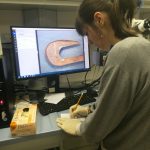
Dr. Emanuela Christiani Bone tools technology | Website
-
Dr. Daniella Bar-Yosef Mollusks | Website
-

Dr. Antonella Pedergnana Use wear study
